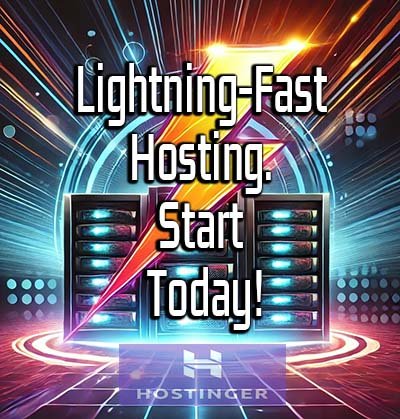The Healing Power of Art
In the wake of the global pandemic, the world has undergone profound changes, many of which have left scars on individuals and communities. Amidst the uncertainty, grief, and isolation, one universal balm has emerged: art. From paintings to poetry, music to dance, creative expression has played a pivotal role in helping people process emotions and reconnect with themselves and others. This article delves into the transformative power of art in the post-pandemic era, exploring its therapeutic benefits, cultural significance, and innovative trends shaping its future.
Art has always been a reflection of human experiences, and the COVID-19 pandemic was no exception. As traditional forms of communication and connection were disrupted, people turned to creativity as a means of coping. This renaissance in artistic expression highlights art’s ability to heal, inspire, and unite, even in the darkest of times. Below, we examine the multifaceted dimensions of this phenomenon.
The Therapeutic Benefits of Art
1. Art as a Mental Health Tool
- Reducing Anxiety and Depression: Studies have shown that engaging in art-making activities, such as drawing, painting, or sculpting, can significantly reduce stress and anxiety levels. Creating art allows individuals to channel their emotions, fostering a sense of control and mindfulness.
- Expressing the Inexpressible: For many, words are insufficient to convey the pain or uncertainty experienced during the pandemic. Art provides a nonverbal outlet for expression, enabling individuals to process trauma and grief.
2. Community Art Therapy
- Shared Healing Spaces: Group art projects, both virtual and physical, became a medium for collective healing. Murals commemorating healthcare workers or collaborative online exhibitions showcased resilience and solidarity.
- Rebuilding Connections: Art initiatives encouraged collaboration and reduced feelings of isolation, helping communities reconnect after prolonged periods of social distancing.
Post-Pandemic Creativity Trends
1. The Rise of Digital Art
- Virtual Galleries and NFTs: With physical galleries closed, digital platforms became the primary medium for artists to showcase their work. Non-fungible tokens (NFTs) emerged as a revolutionary way to buy, sell, and collect art.
- Augmented Reality (AR) Art: AR-enabled artworks gained popularity, allowing audiences to experience immersive, interactive pieces from the safety of their homes.
2. DIY Art Movements
- Crafting Comeback: Lockdowns saw a surge in DIY crafting, from knitting to pottery, as people sought hands-on activities to fill their time and ease stress.
- Accessible Tutorials: Platforms like YouTube and Instagram became hubs for free art tutorials, empowering individuals to learn and create.
Cultural Significance of Art in Recovery
1. Art as a Historical Record
- Documenting the Pandemic Experience: Visual and literary art captured the emotions, struggles, and resilience of humanity during this unprecedented time.
- Memorialization: Public installations and artworks served as memorials for lives lost, fostering collective mourning and remembrance.
2. Reviving Local Arts
- Support for Independent Artists: Grassroots movements and crowdfunding campaigns provided financial aid to struggling artists, ensuring the survival of local art scenes.
- Cultural Festivals: With restrictions lifting, art festivals celebrated the return of live performances and cultural gatherings, rejuvenating communities.
Examples of Art’s Healing Impact
- Portraits of Healthcare Heroes: Artists around the globe created portraits of frontline workers to honor their sacrifices and boost morale.
- Street Art for Unity: Murals with messages of hope and resilience became common in urban areas, inspiring passersby.
- Virtual Choirs and Concerts: Musicians collaborated remotely to produce performances that brought joy to millions.
- Pandemic Diaries: Writers documented their daily lives, offering readers comfort and relatability.
- Healing Through Dance: Online dance challenges and performances encouraged movement as a form of emotional release.
- Quarantine Photography Projects: Photographers captured poignant moments of isolation, showcasing both hardship and hope.
- Mindfulness Coloring Books: These became popular for their meditative qualities, helping individuals focus and relax.
- Interactive Online Exhibits: Museums launched virtual tours and interactive exhibits, ensuring accessibility for all.
- Community Mosaics: Residents contributed tiles to create collective artworks symbolizing unity.
- Children’s Art Contests: Schools and organizations encouraged young artists to express their feelings about the pandemic.
Challenges and Opportunities in Post-Pandemic Art
1. Accessibility and Equity
- Bridging the Digital Divide: Not everyone had access to the technology required for digital art consumption or creation. Efforts to provide resources and training are essential.
- Inclusive Representation: Ensuring diverse voices are heard in the art world remains a priority.
2. Sustainability of Artistic Movements
- Funding Challenges: Many artists and institutions faced financial instability, necessitating innovative funding models.
- Adapting to Hybrid Models: A blend of in-person and digital formats offers new possibilities but also demands adaptability.
The Future of Art and Healing
As we look ahead, the role of art in healing and innovation remains vital. Governments, organizations, and individuals must prioritize creative initiatives to ensure art continues to thrive and support societal well-being. Collaboration between tech and art sectors can further enhance accessibility and engagement.
Conclusion
The pandemic underscored art’s transformative power, showcasing its ability to comfort, connect, and inspire. From therapeutic benefits to cultural preservation, art proved indispensable during a time of global crisis. As we move forward, nurturing creativity will be crucial in addressing ongoing challenges and fostering a resilient, connected world.
Art is not merely a luxury or pastime; it is a lifeline. Whether through individual expression or community collaboration, creativity offers a path toward healing and hope. Let us continue to champion the arts as we build a brighter, more harmonious future.
References
- Smith, J. (2022). The Role of Art in Mental Health Recovery. Psychology Today.
- Brown, L. (2021). Digital Art Revolution: The Impact of NFTs on Creativity. ArtTech Journal.
- Johnson, R. (2023). Community Healing Through Collective Art Projects. Social Impact Quarterly.
- World Health Organization. (2022). Art and Mental Health: A Global Perspective. WHO Publications.
- Gonzalez, A. (2021). Post-Pandemic Cultural Revival: Case Studies. Cultural Insights Magazine.
See Also: How Dark Art Influences Emotion and the Human Psyche










